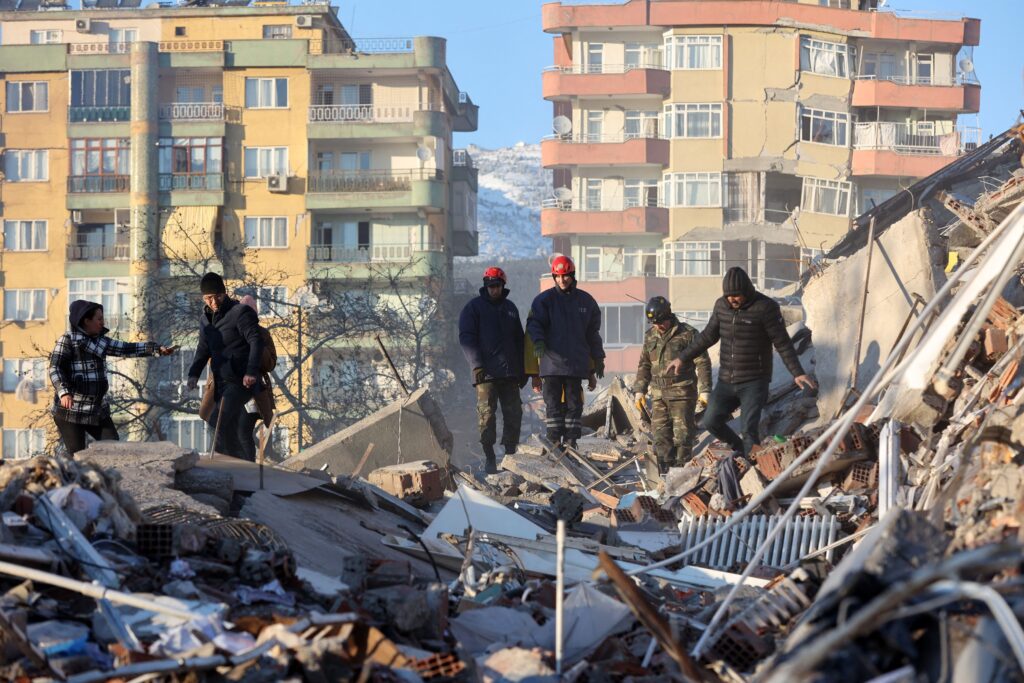SUSTAINABLE CONSTRUCTION AND EARTHQUAKE RESILIENCE: A PERFECT MATCH
Sustainable construction and earthquake resilience are two critical facets of modern infrastructure development. They may seem distinct, but when brought together, they form a powerful synergy that not only safeguards lives and property but also promotes long-term environmental well-being. In this article, we will explore how sustainable construction and earthquake resilience complement each other, offering a path towards a safer and more sustainable future.
1. Sustainable Construction – Building for the Future
Sustainable construction is a philosophy that emphasizes the creation of structures and infrastructure that minimize their environmental impact, conserve resources, and improve quality of life. This approach focuses on various aspects:
a. Energy Efficiency: Sustainable buildings are designed to consume less energy through effective insulation, energy-efficient appliances, and renewable energy sources like solar panels.
b. Materials and Resources: The use of eco-friendly materials, recycling, and reusing materials, and reducing waste contribute to sustainability.
c. Water Conservation: Sustainable construction promotes efficient water use, including rainwater harvesting and wastewater treatment.
d. Minimal Environmental Impact: Efforts are made to reduce pollution, habitat destruction, and resource depletion during construction and throughout the building’s life cycle.
2. Earthquake Resilience – Safeguarding Against Natural Disasters
Earthquake resilience pertains to a structure’s ability to withstand seismic forces and protect occupants during an earthquake. This concept is crucial in regions prone to seismic activity. Key aspects of earthquake resilience include:
a. Seismic Design: Engineering and architectural strategies are employed to ensure buildings can withstand ground shaking, ground rupture, and ground failure.
b. Retrofitting: Existing structures are often retrofitted to meet modern seismic standards, strengthening them against potential earthquakes.
c. Early Warning Systems: Technologies and systems are in place to provide advance notice of impending earthquakes, enabling people to take safety precautions.
d. Public Education: Raising awareness and educating the public about earthquake preparedness and safety measures.
3. The Perfect Match
When sustainable construction and earthquake resilience are combined, several key advantages emerge:
a. Resource Efficiency: Sustainable construction principles lead to the use of resilient materials that can withstand earthquakes, ensuring a long-lasting infrastructure.
b. Energy Efficiency: Earthquake-resistant structures often incorporate energy-efficient designs, reducing the environmental footprint.
c. Disaster Recovery: Sustainable construction techniques improve post-disaster recovery efforts, helping communities bounce back more swiftly.
d. Economic Savings: Both earthquake resilience and sustainable construction save money in the long run by reducing the need for reconstruction and repair.
e. Community Well-Being: Earthquake-resistant, sustainable buildings contribute to community safety, health, and overall well-being.
4. Real-World Examples
Several real-world examples demonstrate the effectiveness of combining sustainable construction and earthquake resilience. For instance, in Japan, earthquake-resistant skyscrapers utilize solar panels and advanced insulation. In California, seismic retrofitting projects often incorporate sustainable practices, reducing their carbon footprint.
5. Challenges and Future Outlook
While the marriage of sustainable construction and earthquake resilience holds immense promise, challenges remain. Costs, regulatory hurdles, and public awareness are areas that need improvement. The future outlook, however, is optimistic. As technology advances and awareness grows, these two fields will become increasingly interconnected, leading to safer, greener, and more resilient communities.
Conclusion
Sustainable construction and earthquake resilience, though distinct in their objectives, prove to be a perfect match in building a safer and more sustainable future. By combining eco-friendly building practices with earthquake-resistant design, we not only safeguard lives and property during seismic events but also contribute to a greener planet and more resilient communities. It’s a partnership that benefits us today and generations to come.


